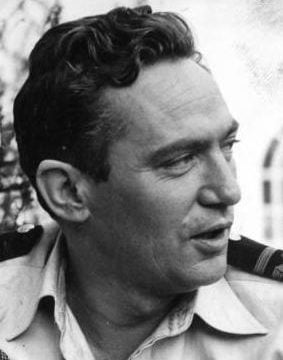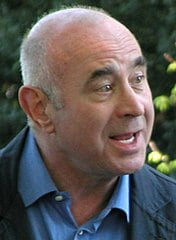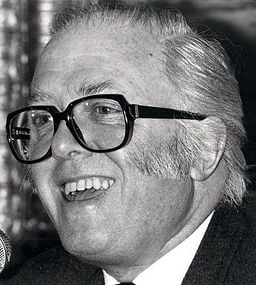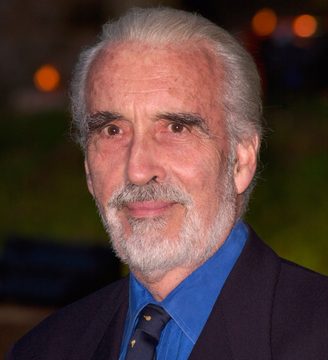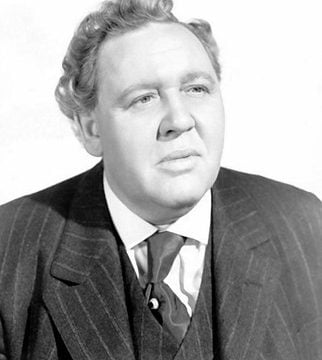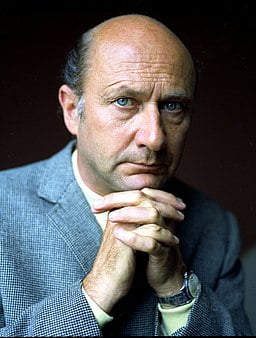Early Life
The actor James Robertson Justice was given the name James Norval Harald Justice at birth. He was born in Lewisham, South East London on 15 June 1907. His parents were Edith and James Norval Justice, a Scottish mining engineer. He was educated at Marlborough College in Wiltshire. After leaving school he studied science at University College London but left after a year. He then went on to study geology at Bonn University, Switzerland but once again left after the first year of study.
In 1927, Justice returned to London and got a job as a fledgling reporter at Reuters. One of his co-workers was Ian Fleming of future “James Bond” fame. After a year of journalism, Justice decided to emigrate to Canada. He initially worked there as an insurance salesman but then tried his hand as both a lumberjack and a gold miner.
The 1930s
In 1930, Justice returned penniless to the UK. However, he soon took up the position of Secretary of the British Ice Hockey Association. He went on to play goalie for the London Lions in the 1931-32 season. He also managed the national team at the 1932 European Ice Hockey Championship. It was the same year that Justice decided to become a racing driver. He entered “The Thousand Mile Race” at Brooklands and competed in various races in the following two seasons.
In the mid-1930s, Justice served as a League of Nations peacekeeper in the Saar Basin: an Anglo-French-occupied region of Germany. Subsequently, he went to Spain and took up the Republican cause during the Spanish Civil War (1936 -1939). It was during his time in Spain that he first grew his bushy beard which became his trademark look. On his return to Britain, he joined the Royal Naval Volunteer Reserve as an officer. However, in 1943, he sustained a shrapnel injury and was discharged from the service.
Acting Career
Justice next pursued a career in entertainment by joining the Players’ Theatre in London. The club provided a Victorian Music Hall-style cabaret. One night Justice just happened to be filling in for the regular chairman of proceedings. A talent scout recommended him to Ealing Studios for a part in the up-and-coming For Those in Peril (1944). However, Justice’s big acting breakthrough came in the Ealing comedy classic Whisky Galore! (1949), in his major supporting role as Dr McClaren. He notably supported Gregory Peck in the Warner Brothers’ swashbuckler, Captain Horatio Hornblower (1951).
Arguably, Justice’s most famous role was that of Sir Launcelot Spratt in the highly successful “Doctor” series of films. He starred in Doctor in the House (1954) and its subsequent five sequels, alongside the likes of Kenneth More, Donald Sinden, and Dirk Bogarde. Some of the big box office hits which helped gain international recognition include; Land of the Pharaohs (1955), The Guns of Navarone (1961), and Chitty Chitty Bang Bang (1968). Checkpoint (1956) in which he starred, was even a massive hit in Japan. Justice’s final film role came in the historical drama The Massacre of Glencoe (1971). In all, Justice appeared in some 85 films in a career that stretched 27 years, between 1944 to 1971.
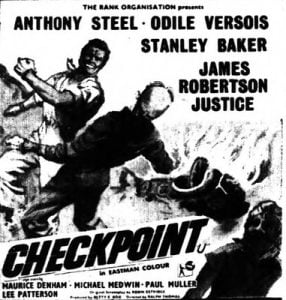
Checkpoint (1956) starring Justice was a big hit in Japan. Image credit: Flickr/ (CC BY-NC 2.0)
Personal Life
In 1941, Justice married nurse Dillys Hayden (1914–1984) in Chelsea. They had one child, James, who was born in 1945. Unfortunately, James died in an accidental drowning at Whitchurch, Hampshire when he was only four years old. Justice followed up the tragic event by having a series of extra-marital affairs. The couple separated in the early 1950s but did not divorce until 1968. Justice met the German-British actress Irene von Meyendorff on the set of The Ambassador (1960). They remained together as a couple up until Justice’s death in 1975. They married only three days before he died.
A committed socialist, Justice stood unsuccessfully in the 1950 General Election as the Labour candidate for the North Angus and Mearns seat. However, in 1957, he did win the vote for the position of Rector of the University of Edinburgh. He repeated the feat in 1963 and served again in the honorary position for another 3-year tenure.
Tall and burly, with a bushy-bearded, Justice’s appearance was far from the conventional image of a film star. He much less claimed to be one. He saw acting as a way to pay the bills so he could follow his true passions. Apart from his great love of ice hockey, sports cars, the fairer sex, and malt whisky, he was especially keen on country pursuits, particularly wildfowling, fishing, and falconry. He was a founding member of the UK’s Wildfowl Trust (1946). This brought him into contact with Prince Philip, which saw the pair become lifelong friends.
The multi-talented Justice, as it turned out, was also a gifted polyglot. As well as English, he was said to be fluent in Spanish, French, Greek, Danish, Russian, German, Italian, Dutch, and Gaelic. Some claim he had a command of up to 20 languages.
A Scottish Heritage
Justice’s other big love was Scotland. With Scottish heritage on his father’s side, the famed raconteur once claimed to have been born under a distillery on the Isle of Skye. On other occasions, he retorted that he was born in Wigtown in the Scottish Borders. However, he did live at the town’s Orchardton House between 1946 and 1950.
During the mid-1950s, Justice purchased a cottage in the village of Spinningdale in the Scottish Highlands. He took to wearing a kilt and adopted the Robertson tartan as his own. Desiring a more Scottish-sounding name, Justice then added “Robertson” to his own. He later dropped his two middle names to become James Robertson Justice.
Ill-health and Death
In 1968, just after completing the filming for his role in Chitty Chitty Bang Bang, Justice suffered a severe stroke. While he did go on to appear in several films afterwards, it was in much less prominent roles. He later suffered a further series of strokes which left him unable to work at all. In 1970, Justice was declared bankrupt.
Justice died penniless, on 2 July 1975, aged 68, in Romsey, Hampshire. His ashes were buried on a moor in the North of Scotland near his former home in the village of Spinningdale.
In March 2008, authors James Hogg, Robert Sellers, and Howard Watson published a co-written biography of Justice entitled; James Robertson Justice— What’s The Bleeding Time? The book’s title refers to a gag line from the Doctor in the House film.
Classic Role
James Robertson Justice is fondly remembered for his roles in the “Doctor films” franchise. His final role in these was Doctor in Trouble from 1970. He had suffered a stroke just before filming began but to his credit, he still managed to put in a stunning performance as you can see below.
